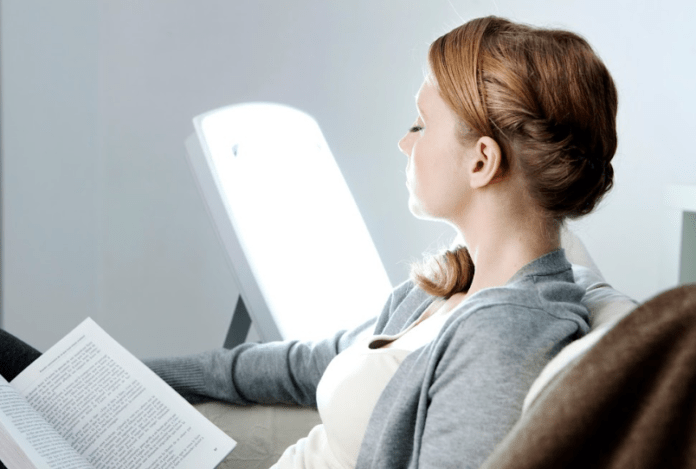Though winter may be a time for the holiday spirit, sledding, hot chocolate, and Christmas decorations, it also means less light from the sun. And in some cases, the lack of sunlight can cause seasonal affective disorder (SAD) among some people.
SAD is a type of depression that is most common in the fall and winter. Research suggests that due to reduced exposure to sunlight, people’s circadian rhythms–the body’s internal biological clock that regulates certain brain functions and hormone synthesis–are disrupted, and their vitamin D levels tend to drop.
This hormonal disruption can also be one of the cause of cold sores. And in some cases, your serotonin levels could also drop, and your melatonin levels may go out of balance, affecting how you sleep and your overall mood.
Luckily, light therapy may help those suffering from the winter blues or even just a minor case of seasonal depression.
What Is Light Therapy?
Light therapy or phototherapy is essentially a form of alternative therapy that uses light waves to treat various conditions. Because each wavelength of light may penetrate the skin to a different depth, different wavelengths of light can be used to cure different sorts of ailments and conditions.
Generally, the different types of light therapy used in practice today include:
- Red Light: There is still a lot of research to be done to see if red light therapy can help with wounds, ulcers, and pain, but there is some evidence that it can help fade scars and improve hair growth.
- Blue Light: SAD and depression sufferers may benefit from blue light therapy, but it also has the potential to aid people suffering from sun damage and acne. Studies suggest that it can also help treat skin cancer.
- Green Light: Aside from wound healing and tissue repair benefits, studies also demonstrate that green light therapy can help relieve pain and muscle stiffness. Sleep disorders and other types of depression can also be treated with green light therapy.
What Are The Benefits Of Light Therapy
As stated previously, light therapy is known to help treat seasonal affective disorder (SAD) and other conditions. However, note that the effects of light treatment are generally short-term and must be sustained with regular treatment.
Some of its primary benefits include:
- Boosted Energy
Serotonin modulates a variety of processes, including energy. When there isn’t enough sunlight, serotonin levels can drop, making people feel tired and restless. However, you can boost your body into producing serotonin by getting light therapy.
- Improved State Of Mind
The most prevalent use of light therapy is to treat depression. Insufficient serotonin in the brain is known to be a significant contributor to the development of mood disorders.
Serotonin influences almost every brain cell. Higher serotonin levels can boost your spirits and may lower your risk of mental health problems. This way, serotonin levels in the brain can be raised using light therapy, allowing you to manage your emotions better.

- Regulated Sleep
Melatonin production is another result of sunlight exposure. The sleep-wake cycle, commonly known as the circadian rhythm, is generally influenced by the hormone melatonin. In fact, many sleep disorders can be attributed to a deficiency in melatonin.
Light therapy can help reset your circadian rhythm to help improve your sleeping patterns and sleep quality.
How Does Light Therapy Work?
A session requires you to sit very close to a lamp or lightbox emitting a significant amount of light from light therapy panels like the MitoPRO series. Essentially, the goal of light therapy is to simulate the light and sunshine you’d normally get from the sun while being outdoors. However, note that your eyes could be damaged if you stare directly at the device for an extended period. And so, what you want is to have your eyes catch up on the light indirectly.
Ideally, getting about 10,000 lux of exposure is advisable. However, you also need to be at the proper distance to get the correct light exposure. Although the distance and length of exposure generally vary. And so, to be on the safe side, ensure you follow what the manufacturer has recommended.
Wrapping It Up
Light therapy has become a well-known treatment to help manage mental health conditions such as seasonal disorders, sleep difficulties, and other types of depression, among other things. And because of its known effect on your circadian cycle and the serotonin levels in your brain, it is often successful.
Perhaps, getting light therapy is something you want to do and try. In such a case, consult your doctor about it to discuss possible options and how you can begin.


